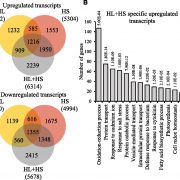
Jasmonic Acid and High Light and Heat Stress
Plant Physiology, Plant Physiology: On The InsidePlants often experience high light (HL) intensities in the field, many times in conjunction with elevated temperatures. Such conditions are a serious threat to agriculture production, because photosynthesis is highly sensitive to both HL intensities and high-temperature stress. During HL stress, the…
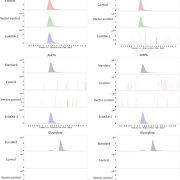
Glyphosate Resistance in Barnyard Grass
Plant Physiology, Plant Physiology: On The InsideGlyphosate is the world’s most commonly used herbicide, owing to its high efficacy, broad spectrum, and systemic mode of action. Most plant species cannot significantly metabolize glyphosate, which is a major factor contributing to its lethality in plants. However, the widespread adoption of glyphosate-tolerant…

Plant Calmodulin-Dependent NAD+ Kinase
Plant Physiology, Plant Physiology: On The InsideA common plant response to a variety of stresses is an influx of calcium (Ca2+) ions followed by an apoplastic burst of reactive oxygen species (ROS). This ROS burst is generated by Ca2+-dependent plasma membrane NADPH oxidases. A rapid increase in the NADP(H) pool size may be required to sustain the…
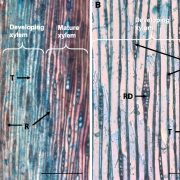
Ray Parenchymal Cells Contribute to Lignification
Plant Physiology, Plant Physiology: On The InsideIn conifers such as Norway spruce (Picea abies), lignin is a major cell wall constituent of secondary xylem (wood), forming approximately 27% of the dry weight. Lignin enhances the structural stability of wood as well as water transport through it. Lignification encompasses many steps, starting with…
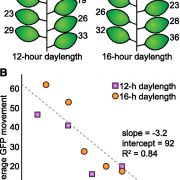
Plasmodesmatal Transport is Regulated by the Circadian Clock
Plant Physiology, Plant Physiology: On The InsidePlasmodesmata (PD) are membrane-bound tunnels that connect the cytosols of neighboring plant cells. The rate of PD transport between cells changes during the course of plant development. Forward genetic screens to identify factors controlling transport through PD have repeatedly revealed that chloroplasts…
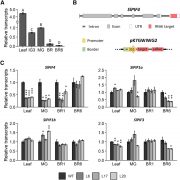
Phytochrome-Interacting Factors and Tomato Qualities
Plant Physiology, Plant Physiology: On The InsidePhytochromes (PHYs) are red/far-red light photoreceptors that are activated by light and deactivated by dark and high temperature. Upon light exposure, PHYs are translocated into the nucleus, where they interact with PHY-INTERACTING FACTORS (PIFs) and induce the degradation of these transcription factors.…

Insights into Esca Grape Vine Disease
Plant Physiology, Plant Physiology: On The InsideEsca is a fungal vascular disease of grapevine (Vitis vinifera) that negatively impacts grape yield and the wine industry. Esca is characterized by three main symptoms: leaf scorch, trunk necrosis, and a colored stripe along the vasculature. The fungi most strongly associated with esca wood necrosis…
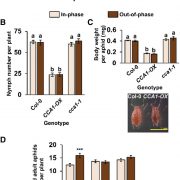
Circadian Clock Gene Affects Aphid Feeding
Plant Physiology, Plant Physiology: On The InsidePhloem sap-feeding aphids inflict plant damage by direct feeding and by acting as a vector for plant disease transmission. Their highly specialized stylets reach the phloem sieve elements, allowing aphids to extract plant photoassimilates without consuming structural tissues. Probing and feeding by aphids…

Improving Grain Filling Rate in Rice
Plant Physiology, Plant Physiology: On The InsidePoor grain filling by hybrid japonica rice (Oryza sativa) is a major agricultural problem. It has previously been reported that the rice accession Ludao, a wild-type japonica rice grown naturally in the Liangyungang region of China, exhibited a high grain-filling rate and could be selected as a parent…

